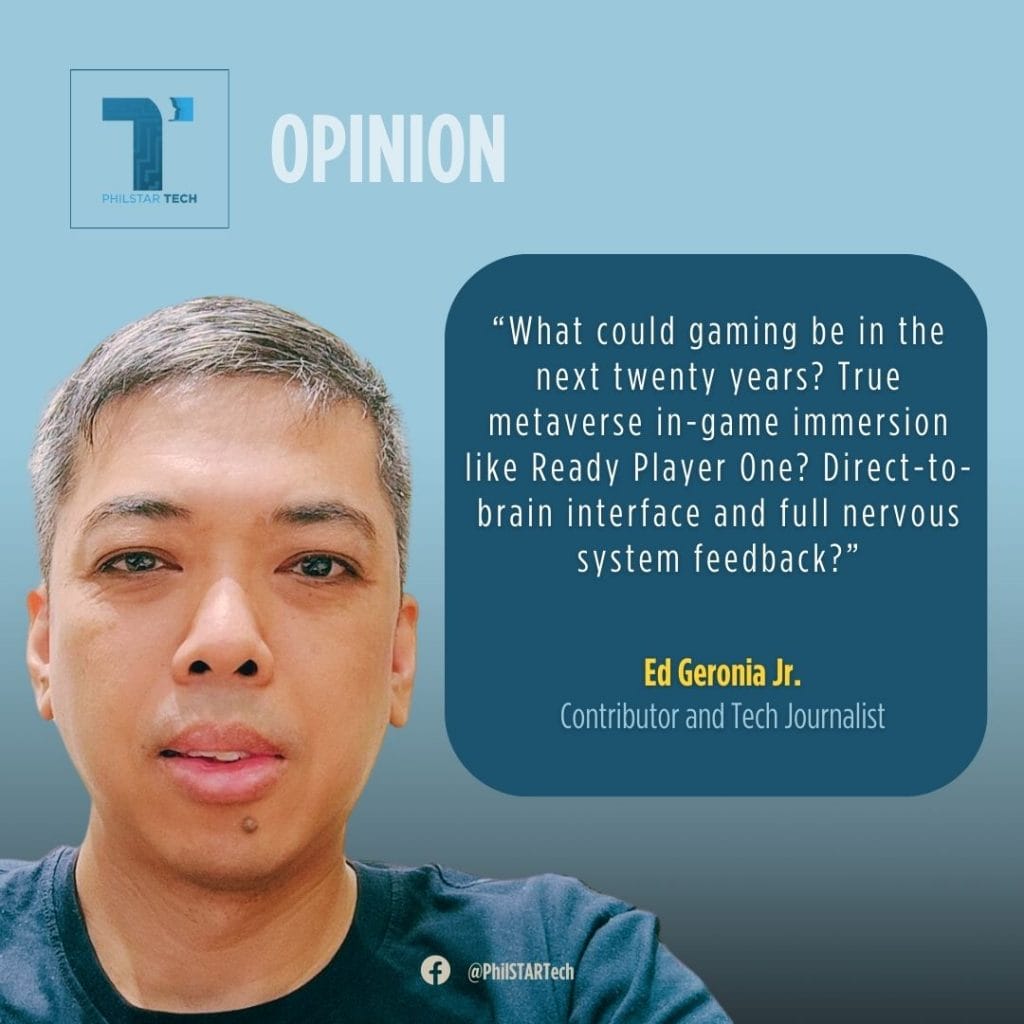Last year, if it were still around, a video games magazine I worked on as an editor called GamesMaster Philippines would have turned 20 years old. It was the time when the PlayStation 2, Xbox, and Nintendo GameCube were reigning consoles. PCs still ran Windows XP, and the handheld gamers had either a Game Boy Advance or the compact clamshell GBA SP. Online gaming was mostly for PC games as MMORPGs like Ragnarok Online gained millions of players in the Philippines. You could go online with some console games but it took some effort since you had to buy separate network accessories for the PS2 and GameCube or subscribed dearly to Xbox Live. Mobile gaming for cellphones was still in its infancy with Symbian 60 and J2ME games running mostly on Nokia devices that had less graphical grunt than a GBA. Nokia attempted to make a handheld gaming and mobile phone hybrid called the N-Gage but that’s probably another topic worth discussing on its own.
Twenty years is an eon in a technology-driven medium such as games. A lot of games that ran on the devices I mentioned can now be emulated by a single handheld device. Consoles like the PS5 and Xbox Series X are now running powerful PC-level hardware with SSDs and always-online features. Handhelds like the Switch and the Steam Deck have narrowed the gap between handheld, PC, and console gaming. Phones have also evolved to become a bonafide platform for gaming as well. To add to this are much more immersive gaming devices like virtual reality rigs such the Meta Quest headset.
Even the way how games are packaged and sold have changed. In the early 2000s, the only way to get games was mostly from a store. You bought the discs and cartridges which had the actual games and didn’t have to download anything else. PC games could be downloaded but they can also be bought at the store and came in box-style packaging which were sometimes larger than cereal boxes. They also came with a lot of extras like manuals, posters, and maps.
Now, buying discs and cartridges is just an option when you walk into stores like Datablitz. If you buy the discs for consoles such as a PS5 or Xbox Series X, you inevitably have to download a large chunk of files anyway to update the game so why not buy them digitally. It’s also quite easy to buy Switch games from the eShop. To get games on the Steam Deck, you log-in to your Steam account and download them to your device.
What about game reviews, tips, walkthroughs, easter eggs, and cheats in 2003? Gamers relied on printed magazines and booklets which they religiously collected. Magazines had other freebies such as disc installers that were packed with demo games. Game reviewers and journalists were respected authorities in their field. Whatever opinions gamers had, they poured out their hearts in dedicated forums, and would sometimes write letters to the editor. Sure the internet was already up and running but a lot of gaming sites still weren’t as comprehensive, in-depth, or localized as a dedicated publication.
Fire up your browser now and reviews are aplenty from mainstream, specialist, and independent sources such as blogs and other video and live streaming platforms. Online walkthroughs are incredibly detailed and exhaustive. Gaming coverage has evolved so much that they can make or break any game, whether it’s a triple-A or indie title. Watching other people play has become another way to experience a game by itself.
What could gaming be in the next twenty years? True metaverse in-game immersion like Ready Player One? Direct-to-brain interface and full nervous system feedback? Maybe I’m thinking way too advanced but if someone told me way back in 2003 that in less than 20 years, I can get to legally play hundreds of licensed games for a measly sum of 120 pesos by subscribing to a service called Game Pass, I would’ve dropped my Sony Ericsson T68i in disbelief.


